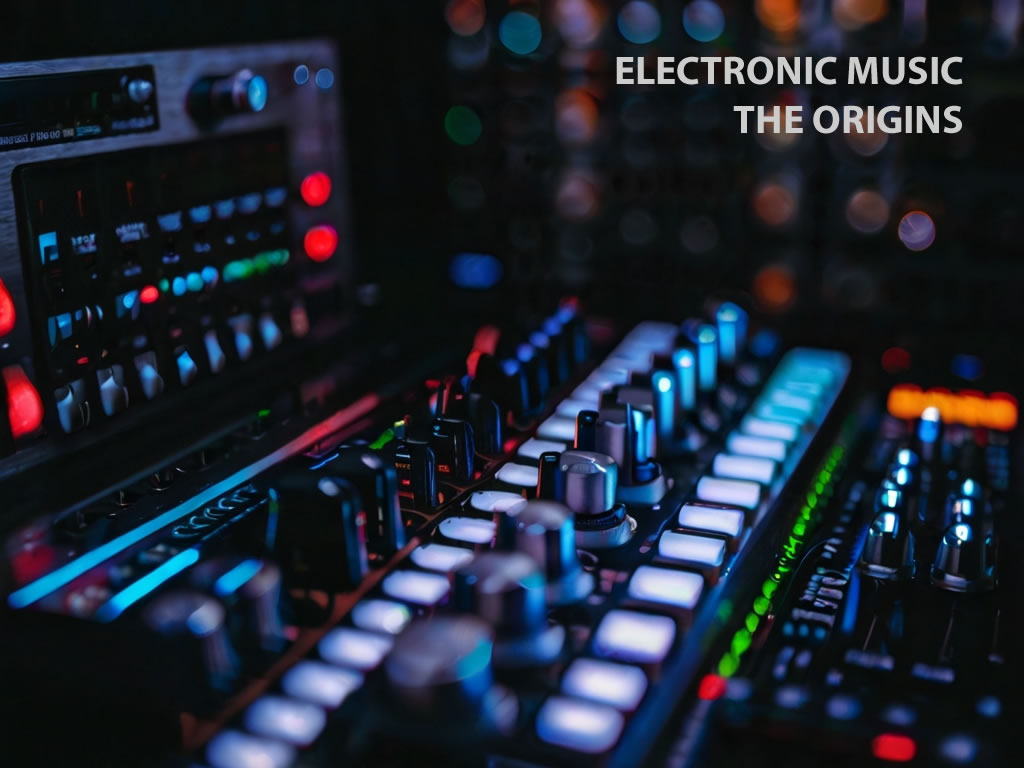The Origins of Electronic Music: A Journey Through Innovation and Sound
Electronic music is a vast genre that has evolved significantly since its inception, transforming from experimental sounds to mainstream hits. It encompasses various styles and subgenres, from techno and house to dubstep and trance, each with unique characteristics. But where did electronic music begin, and how did it evolve into the global phenomenon it is today?
The Early Origins of Electronic Music
The story of electronic music can be traced back to the late 19th and early 20th centuries. The invention of early electronic instruments like the Telharmonium and the Theremin laid the groundwork for what was to come. These instruments used electrical circuits to generate sounds, a revolutionary concept at the time. However, it wasn’t until the mid-20th century that electronic music truly began to take shape.
In the 1940s and 1950s, composers started experimenting with tape music, manipulating recorded sounds by cutting, splicing, and looping tapes. Pioneers like Pierre Schaeffer, with his work in musique concrète, and Karlheinz Stockhausen, with his avant-garde compositions, paved the way for electronic soundscapes.
The Development of Synthesizers and Early Electronic Music
One of the key milestones in the history of electronic music was the development of the synthesizer. In the 1960s, innovators like Robert Moog introduced the Moog synthesizer, which quickly became a staple in both experimental and popular music. The synthesizer allowed artists to create sounds that were impossible with traditional instruments, opening up new creative possibilities. It became synonymous with the psychedelic and progressive rock movements of the 1970s, influencing artists like Kraftwerk and Tangerine Dream.
Kraftwerk, in particular, is often credited with shaping the early landscape of electronic music. Their robotic rhythms and pioneering use of sequencers and synthesizers marked the birth of what would eventually evolve into genres like techno, electro, and house music.
The Birth of Modern Electronic Music Genres
By the late 1970s and early 1980s, electronic music had firmly planted its roots in the music industry. The rise of disco in the 1970s, heavily influenced by electronic instrumentation, gave way to the early forms of house music and techno in cities like Chicago and Detroit. These genres combined elements of disco, funk, and electronic beats to create high-energy dance music that resonated with clubgoers.
House music, which originated in Chicago in the early 1980s, was characterized by its repetitive 4/4 beats, synthesized basslines, and rhythmic use of drum machines like the Roland TR-808 and TR-909. Around the same time, in Detroit, techno music emerged, offering a darker, more industrial sound. Artists like Juan Atkins, Derrick May, and Kevin Saunderson (known as the Belleville Three) were instrumental in shaping the techno genre, combining futuristic themes with pulsating beats.
The Explosion of Subgenres
As electronic music spread across the globe, it began to splinter into numerous subgenres. In the UK, the late 1980s and early 1990s saw the rise of rave culture, which gave birth to acid house, breakbeat, and hardcore techno. Electronic music festivals became a global phenomenon, further fueling the genre’s growth.
One of the most influential subgenres to emerge during this time was trance music, known for its hypnotic melodies and driving basslines. Artists like Paul Oakenfold and Tiesto helped bring trance to the forefront of electronic dance music (EDM), making it a global force by the early 2000s.
At the same time, other subgenres like drum and bass, dubstep, and ambient music emerged, each offering a distinct sound. Drum and bass evolved from breakbeat, characterized by fast breakbeats and heavy basslines. dubstep, on the other hand, focused on wobbly basslines and syncopated rhythms, making it one of the most popular genres of the 2010s, thanks to artists like Skrillex and Flux Pavilion.
The Mainstream Rise of Electronic Music
By the 2000s, electronic music had permeated mainstream culture. The rise of EDM (Electronic Dance Music) brought electronic music to massive festivals like Tomorrowland and Ultra Music Festival, and artists like David Guetta, Deadmau5, and Calvin Harris achieved worldwide fame. This era saw electronic music not only dominating the dance floors but also blending with pop music. Chart-topping hits frequently featured electronic production, blurring the lines between pop, electronic, and dance music.
The Role of Technology in Electronic Music
One of the defining aspects of electronic music is its relationship with technology. The genre has always thrived on innovation, from the analog synthesizers of the 1970s to the digital workstations and software synthesizers of today. Modern electronic music producers can create entire albums using just a laptop and digital audio workstation (DAW) software like Ableton Live, FL Studio, or Logic Pro.
This democratization of music production has allowed a new generation of electronic artists to emerge, from bedroom producers to internationally recognized DJs and producers. Technology has also allowed for more experimentation, with genres like glitch hop, future bass, and synthwave pushing the boundaries of what electronic music can sound like.
Conclusion
The origins of electronic music are rooted in experimentation, innovation, and a relentless push toward the future. From the early experiments with electronic instruments to the rise of subgenres like techno, house, dubstep, and trance, electronic music has constantly evolved while maintaining its core essence of creativity and technological advancement.
As electronic music continues to shape modern culture, its influence can be felt in virtually every corner of the music world. Whether it's the pulsating beats of a techno club in Berlin or the anthemic drops of an EDM festival, electronic music’s impact is undeniable, and its future is as exciting and unpredictable as its past.

